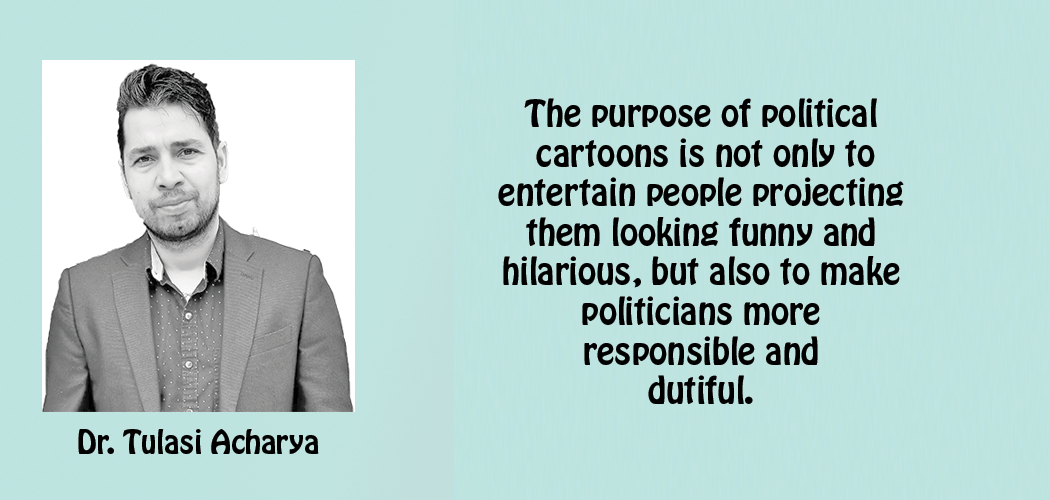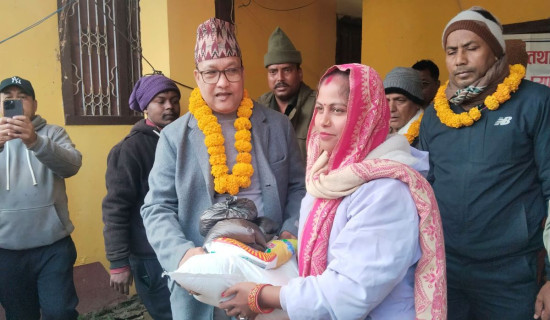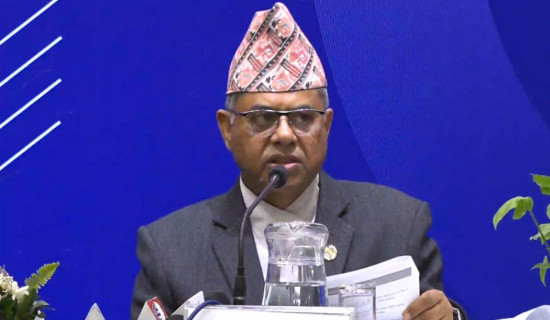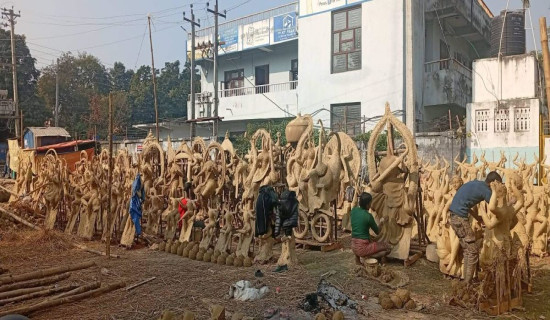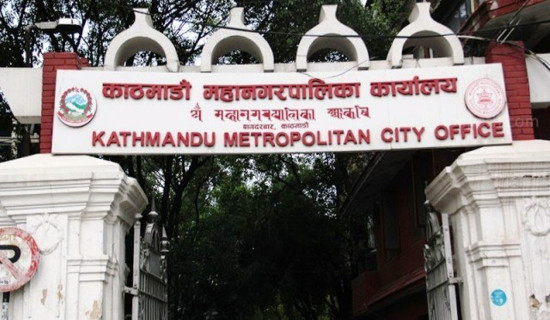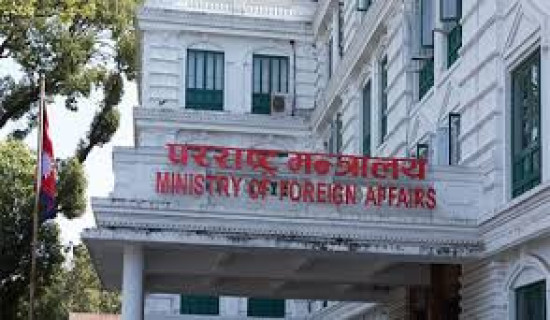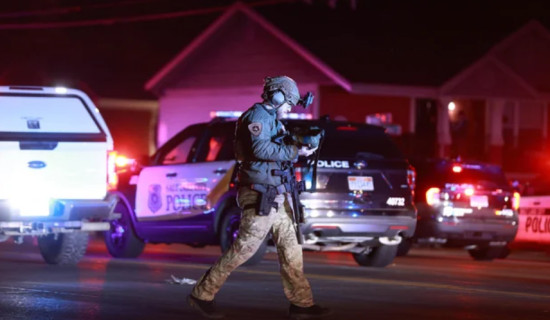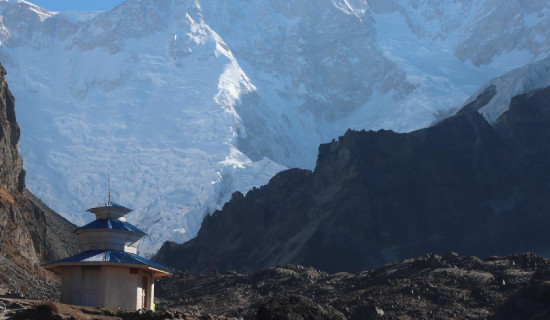- Thursday, 8 January 2026
Message From Political Cartoons
Some are sphinx like — half man and half animal. Some are hairy like orangutans. Some look clownish — small body size but big head and big belly. Some look transgendered in their outfits, for example a male politician is dressed up in a Sari and blouse, the other in a T-shirt and mini skirt. These are political cartoons. Cartoons are funny and satirical. Wilfrid Wood says, “Wonderful-looking people can be boring as hell. Mouldy old potatoes can have a lot going for them.”
One may witness such political cartoons on social media as they have been posted or shared by social media users or that have been printed in newspapers or published online. Some of them are sketched by cartoonists while others are made from animation or are replaced with memes. Such cartoons speak volumes about the politicians who should take something away from the cartoons. Such cartoons or memes aim to — more than entertain — mock, deride, look down upon and loathe politicians for their unaccountability and irresponsibility.
Long history
The use of political cartoons has a long history and it started with a purpose of satire. Brianna Vittachi writes, “Cartoonists started using satire to convey moral or political messages to the public as a means of entertainment, journalism, propaganda and nationalism.” According to Haley Grant, “Benjamin Franklin’s iconic “Join or Die” is acknowledged to this day as America’s first official political cartoon.” It portrays a severed snake whose divided parts represent the divided colonies. This cartoon emphasised, Grant writes, “the importance of unity and sparked a sense of nationality among the colonies that ultimately drove the fight for independence.” By the early 20th century, the cartoons moved into animated moving images.
In Nepal, we have started noticing political cartoons more frequently after the restoration of democracy. With the abundance of social media, people have been frequently coming across such cartoons and sharing them. Sharing such political cartoons or memes by social media users reflect on people’s psychology when it comes to the perception of politicians. When there is a gap between the politicians’ words and deeds, it brings in hateful emotions amongst people that cartoonists and animators succeed to catch. Such cartoons pacify people’s anger against the politicians.
The meanings of cartoons have expanded. Not only are they simply satirical, but also such cartoons become symbols and metaphors — as politicians being incapable, inhuman, and jokers — that represent people’s ridiculed perceptions of Nepali politicians. Brianna Vittachi writes, “Cartoons commonly enlist symbolism, exaggeration, labelling, analogy and irony to rouse humour or skepticism in an audience.” As the politicians fail to perform what they promised to accomplish in front of Nepali people and their role of leadership remains invisible, their political image crumbles like a castle made of cards.
When responsible politicians are not found working responsibly, cartoonists and animators start metamorphosing the former’s real mugshots making them look funny, unrealistic, and shameful unlike Gregor Samsa, a character in Franza Kaflka’s story “metamorphosis”. One morning Samsa wakes up to find himself transformed into “monstrous vermin” which showcases the reality of a modern man burdened with numerous responsibilities.
Cartoons of Nepali politicians demonstrate different demeanors, for example, a Sphinx like mugshot display bestial nature of the character, a clownish look bring out concealed character who is just a butt of joke in the position he is in, a male character dressed up in a Sari and blouse reflect on the effeminate character of a male politician, perhaps to reflect on the character’s dual nature, his lack of judgment, reasoning, and leadership quality, so to speak in the context of patriarchal/chauvinistic culture.
Such images on social media show how capable cartoonists and animators are to grab Nepali people’s perceptions and venting emotions against some politicians who have made many mistakes in the past and continue to repeat them, committing irresponsible deeds frequently and yet not realising it. Sharing such political cartoons on social media means losing trust upon the politicians and doubting their capability and capacity, making fun of them, and losing respect that the politicians could deserve if they remained accountable to people.
Proliferation
The proliferation of such political cartoons on social media gives those who are frustrated with politics and politicians a sense of satisfaction. The purpose of political cartoons is not only to entertain people projecting them looking funny and hilarious, but also making politicians more responsible and dutiful. Such cartoons are the punishments given to the politicians for their dirty politics, which is also the reflection of frustration, anxiety, and pessimism Nepali people are coping with during ‘wait and see’ the future of Nepal. Such cartoons, on one hand, relieve the mind of a frustrated Nepali, and morally obligate politicians to be responsible to what they are responsible for, on the other.
Hope Nepali politicians are fully aware of such cartoons proliferated in social media and learn a lesson and be informed about their duty and responsibility. The cartoons are, symbolically speaking, for politicians to take something positive away from and bring about some positive change in the leadership more than for people to look and laugh at and share on social media.
(The author is Assistant Professor of English at South Georgia State College, USA)

